Hi Hive DIY and gardening enthusiasts! Here's another simple DIY project from Ligaya Garden. When you've finished reading the post (and hopefully upvoted it), please feel free to comment with any design changes or other uses that you might try for this project.
This one is about how to extract potassium from your leftover banana skins.
Lets' have a look!
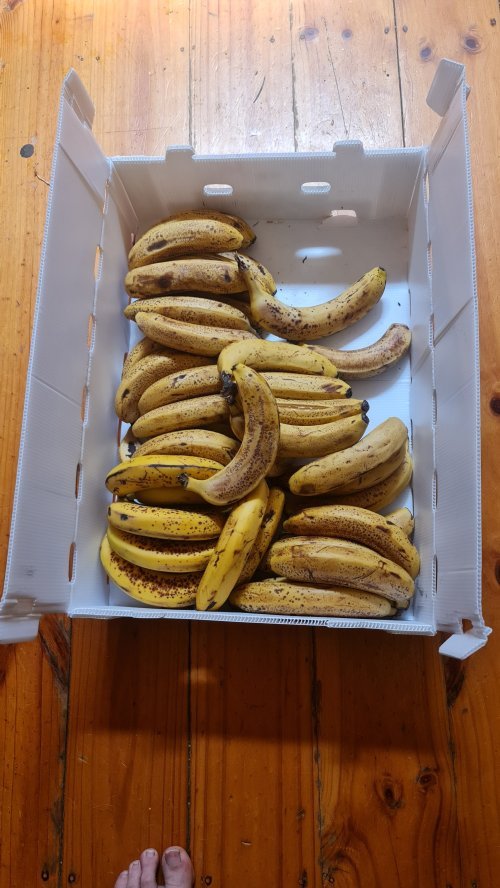
I first wrote about using banana skins to give a potassium boost for your plants in Grass Roots No. 264 Apr/May 2021 in an article on making potassium rich liquid fertilizers which is called ‘Make your Flowers Bloom’. Since then I’ve refined my knowledge and technique and taught it in several workshops and demonstrations of home fertilizer making.
I usually hold off posting for a little while after I have an article published and I reckon now is the time to include it here.
Why is potassium important?
Potassium is essential for most organisms because it controls the flow of water into and out of cells. This is particularly important for plants because much of their structure and shape relies on water pressure.
Cell function, metabolism and transpiration all depend on correct water balance, making potassium very important to plant life.
There are many stories about potassium boosting flowering on many plants, including Tomatoes. There is little scientific evidence for this that I can find but I have found that it works. Adding a potassium supplement (‘seems’ – I’ll play it safe here) to boost flowering and fruiting. Maybe it’s because there is a lot of cellular activity involved in flowering and fruiting and that takes water. Possibly, all the potassium is doing is guaranteeing that adequate water is supplied to exactly where it is needed .
Potassium is one of the 3 key nutrients that are always listed on your fertilizer containers. Along with (N)itrogen, (P)hosphorus, K, or Potassium make up the famous NPK ratio. For some reason, potassium is listed as ‘K”, which comes from the Latin ‘Kali-‘ from which it is named.
Banana skins are a ‘waste’ product that is chock full of potassium and it is easy to retrieve it for yourself. All you have to do is ferment the skins. In addition to potassium, banana skins contain magnesium, which is essential for chlorophyll formation (which is the energy source for the plant) and calcium, which is important for strong cell walls. You can see why it’s important not to just compost your banana skins. In the form covered in this post, your minerals will be more immediately accessible and easy to apply in a more targeted manner.
How to make it –
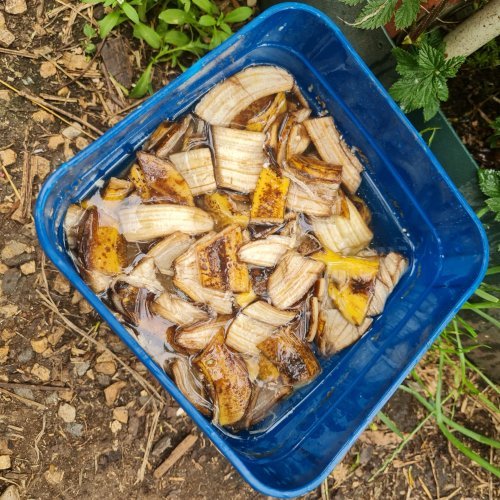
All you need to do to extract potassium and other water soluble compounds from banana skins is to chop your skins into small pieces, cover them with clean water (rainwater is fine) in a covered container and leave it alone for 2 weeks to a month. It’s just like any other kind of ferment. A trick is to weigh down the skins so that they ferment properly below the water surface, letting the anaerobic microbes so their thing.
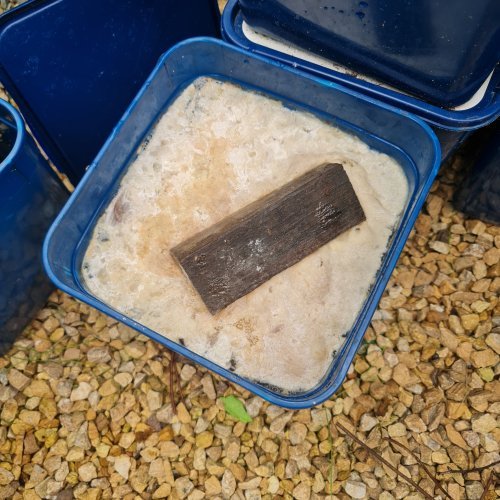
After a couple of days, sugars will leach out and microbes will get to work breaking down the organic material. What potassium they don’t use goes into solution in the water and when you strain the mix after a couple of weeks, you will have access to it for your plants.
Strain off the liquid (I usually give the pulp a bit of a squeeze to to get all the goodies out) and then let it sit for a while. There will still be some fine sediment in the solution that can clog up sprayer nozzles. It’s so fine that even running it through a coffee filter won’t remove it all. Let it settle, then decant off the clearer liquid above it.
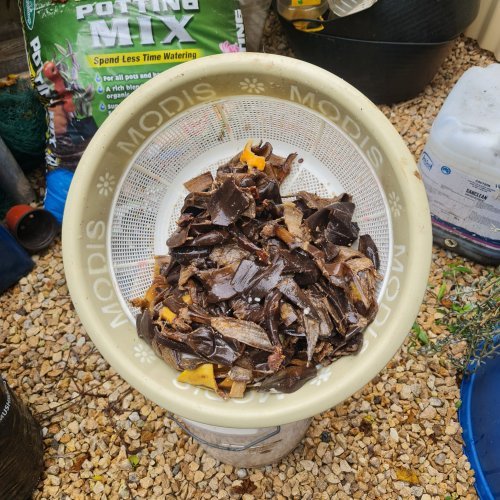
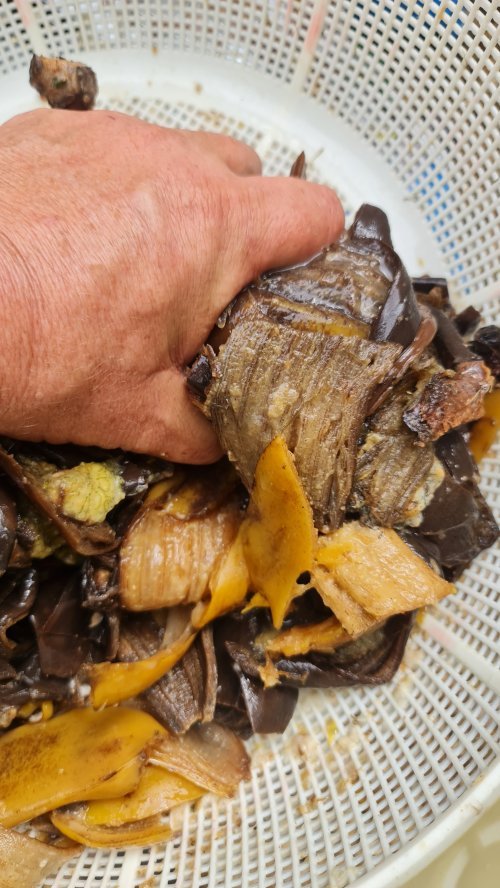


When well fermented, the mixture will have a pH of 4.2 to 4.3, making it pretty acidic. If you add about 20% vinegar (any vinegar) to the total volume, it drops the pH even further, making the brew pretty shelf stable. If you want to store it, do so out of direct sunlight. You may have to open the lid of your bottle from time to time because there will still be a living population of microbes giving off carbon dioxide. If you don’t burp the bottle, when you open it, you will be met with a fountain of liquid, kind of like when you open a shaken up lemonade bottle.
If you forget about your ferment, don’t work, it is pretty forgiving. I’ve left mine a couple of months and it’s been fine when strained out.
How to use your banana liquid –
To use your banana skin extract, all you need is a teaspoonful per litre of water in your watering can if you are watering it in.
For a foliar spray, one tablespoonful per 10 litres is all that is required. To make measuring easy, I mix up 1 tbsp in a watering can (yeah, I know they’re mostly 9 litres nowadays but its close enough), fill my sprayer and water the soil with the rest.
Don’t worry about affecting the pH of your soil with this liquid, the amount that you use is too dilute to cause any problems.
What about the leftovers?
The banana skins will go brown and mushy and a lot of sediment will fall to the bottom of your container. Don’t throw this away, add it to your compost. It can be used on your worm farm too but don’t add it as it is – it’s too acidic!. If you mix it with other materials and sprinkle in some crushed-up eggshells, dolomite or bicarb soda, you will reduce the overall pH and the worms will love you for it.
The strained out sludge goes great in Bokashi bins too!



















